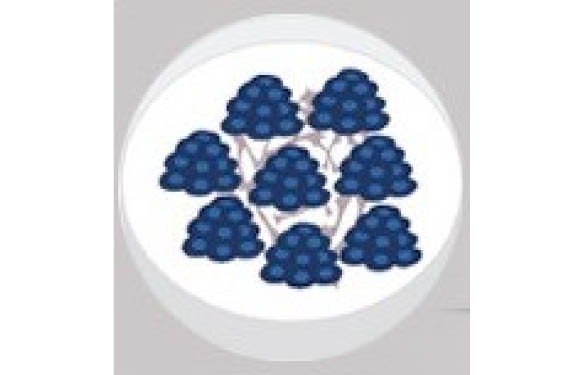Newly added to the Stemolecule portfolio are three small molecules which support a new approach for the derivation and maintenance of naïve human pluripotent stem cells. These three newly identified small molecules, WH-4-023, SB590885 and IM-12, are all kinase inhibitors.
ReproCELL is currently the only stem cell reagent company able to supply all components of the 5i/L/A (5 inhibitors/human LIF/Activin A) media supplement formulation needed for the derivation and maintenance of a “naïve” or ground-state of pluripotency of human cells as referenced in the October 2014 Cell Stem Cell paper by Theunissen et al. out of Dr. Rudolf Jaenisch’s Lab at MIT’s Whitehead Institute. The paper is titled “Systematic identification of culture conditions for induction and maintenance of naïve human pluripotency.”
Stemgent Stemolecule WH-4-023 (SRC Inhibitor)
The addition of these three new small molecules consolidates a 5i/L/A media supplement offering in one place. 5i/L/A media supplement consists of 5 kinase inhibitors; WH-4-023 SRC inhibitor, SB590885 BRAF inhibitor, IM-12 GSK-3β inhibitor, PD0325901 MEK inhibitor, Y27632 ROCK inhibitor, recombinant human leukemia inhibitory factor (LIF) and Activin A. The 5i/L/A media supplement allows for the derivation of and conversion of human PSCs to a naïve state of pluripotency hypothesized to be the human equivalent to the mouse ground state of pluripotency.
The Theunissen paper demonstrates the conversion of traditional human epiblastic pluripotent stem cells to a ground state of pluripotency thought to be equivalent to the traditional mouse embryonic stem cell state. The human equivalent to the mouse ground state of pluripotency is termed naïve. Naïve human PSCs differ from traditional human epiblastic ESCs in that human ESCs are FGF/BMP signaling dependent (equivalent to mouse epiblastic stem cells). While naïve PSCs are LIF/Stat3 signaling dependent (equivalent to traditional mouse ESCs). Both traditional mouse ESCs and naïve human PSCs demonstrate higher single cell viability when passaging. Likewise both cell types demonstrate enhanced proliferation when compared to epiblastic stem cells. These attributes make naïve human pluripotent stem cells a good choice for genetic manipulation and gene targeting applications.
Related products used in the paper that researchers may be interested in include: Human recombinant FGF-basic growth factor, CHIR99021 and doxycycline.





